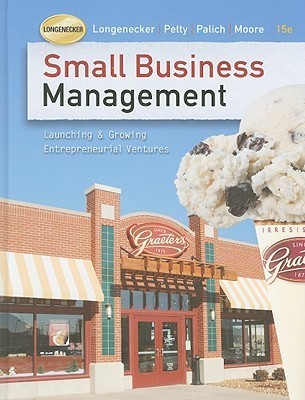
The E-myth Revisited
Book Description
Imagine building a thriving business only to find yourself trapped in its chaos. "The E-myth Revisited" unleashes the secrets behind this common entrepreneurial nightmare, exposing the myths that ensnare aspiring business owners. With a masterful blend of insight and actionable strategies, Michael E. Gerber reveals how to transform your passion into a powerful enterprise. Discover the difference between working in your business and on it, and learn the true path to sustainable success. Are you ready to break free from the daily grind and unleash your entrepreneurial potential?
Quick Book Summary
In "The E-Myth Revisited," Michael E. Gerber challenges the conventional wisdom that most small businesses succeed because their founders are skilled at their craft. He introduces the "Entrepreneurial Myth"—the mistaken belief that technical expertise alone is enough to run a successful business. Gerber explains why most small businesses fail: owners become overwhelmed working in their business, bogged down by day-to-day operations, rather than strategically working on the business itself. Through illustrative stories and practical frameworks, Gerber conveys the necessity for business owners to adopt the roles of entrepreneur, manager, and technician—and, most importantly, to favor systematization over improvisation. The book outlines a roadmap for building businesses that are not owner-dependent, using repeatable, scalable systems. This approach empowers entrepreneurs to achieve sustainable growth, personal freedom, and lasting success.
Summary of Key Ideas
Table of Contents
The Entrepreneurial Myth and the Three Personalities
Michael E. Gerber begins by dismantling the pervasive "Entrepreneurial Myth"—the belief that most businesses are started by entrepreneurs with bold visions. He argues instead that businesses are usually founded by technicians suffering from an "entrepreneurial seizure": a moment of inspiration that leads them to believe technical skill alone will guarantee success. This foundational misunderstanding leads to many common pitfalls, as technicians often lack the broader managerial and entrepreneurial skills necessary to build a sustainable company.
Working on Your Business vs. In Your Business
Gerber identifies three key personalities inside every small business owner: the Entrepreneur, the Manager, and the Technician. The Technician focuses on the hands-on work, the Manager seeks order and consistency, and the Entrepreneur dreams and strategizes for the future. Problems arise because most business owners default to being Technicians, neglecting the other roles. Achieving balance between these personalities is essential; sustainable businesses demand entrepreneurship to drive vision, management to ensure organization, and technical skills to deliver value.
The Importance of Systems and Processes
A core lesson of the book is the distinction between working in your business (handling daily tasks) and working on your business (designing systems and planning growth). Gerber stresses that many entrepreneurs get trapped by the routine operational work, losing sight of long-term strategy. Real progress happens when owners step back to develop standardized processes, delegate responsibilities, and focus on scaling.
Building a Scalable, Owner-Independent Enterprise
Gerber introduces the concept of developing franchise-like systems, even if the business never becomes a franchise. Systematization involves documenting procedures for every business function, ensuring consistency and quality independent of any individual person. This approach not only alleviates the owner’s workload but makes the business more valuable and easier to grow. It also reduces risk, as standardized systems are less prone to failure if any one employee leaves.
Redefining the Entrepreneur's Journey
Finally, Gerber reframes the business owner's journey: the true goal is to create an enterprise that runs smoothly without constant owner intervention. This shift grants business owners the freedom and flexibility they often crave. By adopting an entrepreneurial mindset, prioritizing systems, and balancing the three core roles, owners can transform their businesses into scalable, sustainable enterprises rather than exhausting traps. The "E-Myth Revisited" ultimately provides a blueprint not just for surviving, but for thriving as an entrepreneur.
Download This Summary
Get a free PDF of this summary instantly — no email required.





